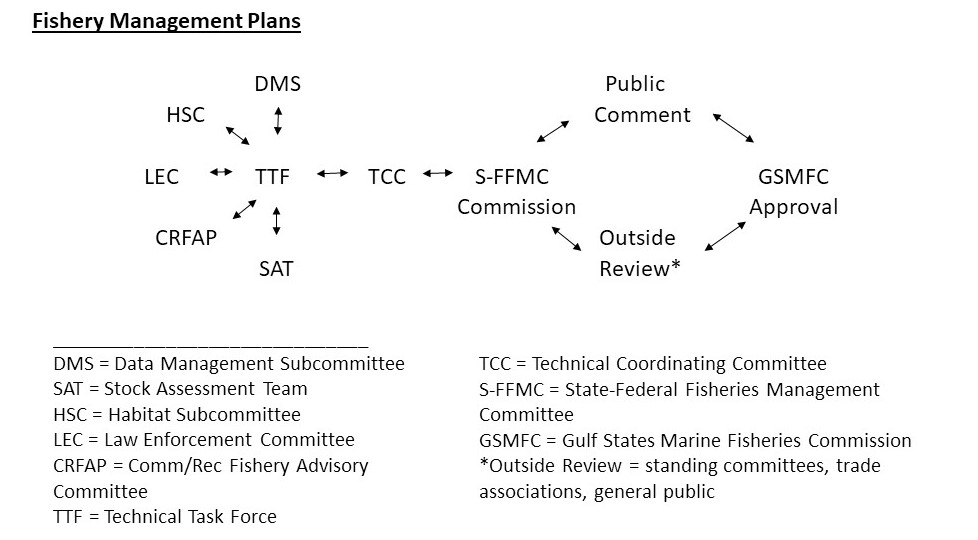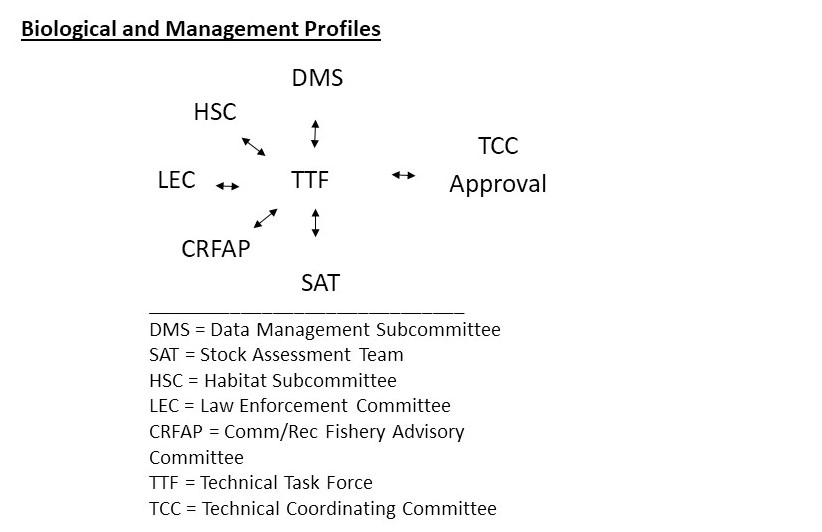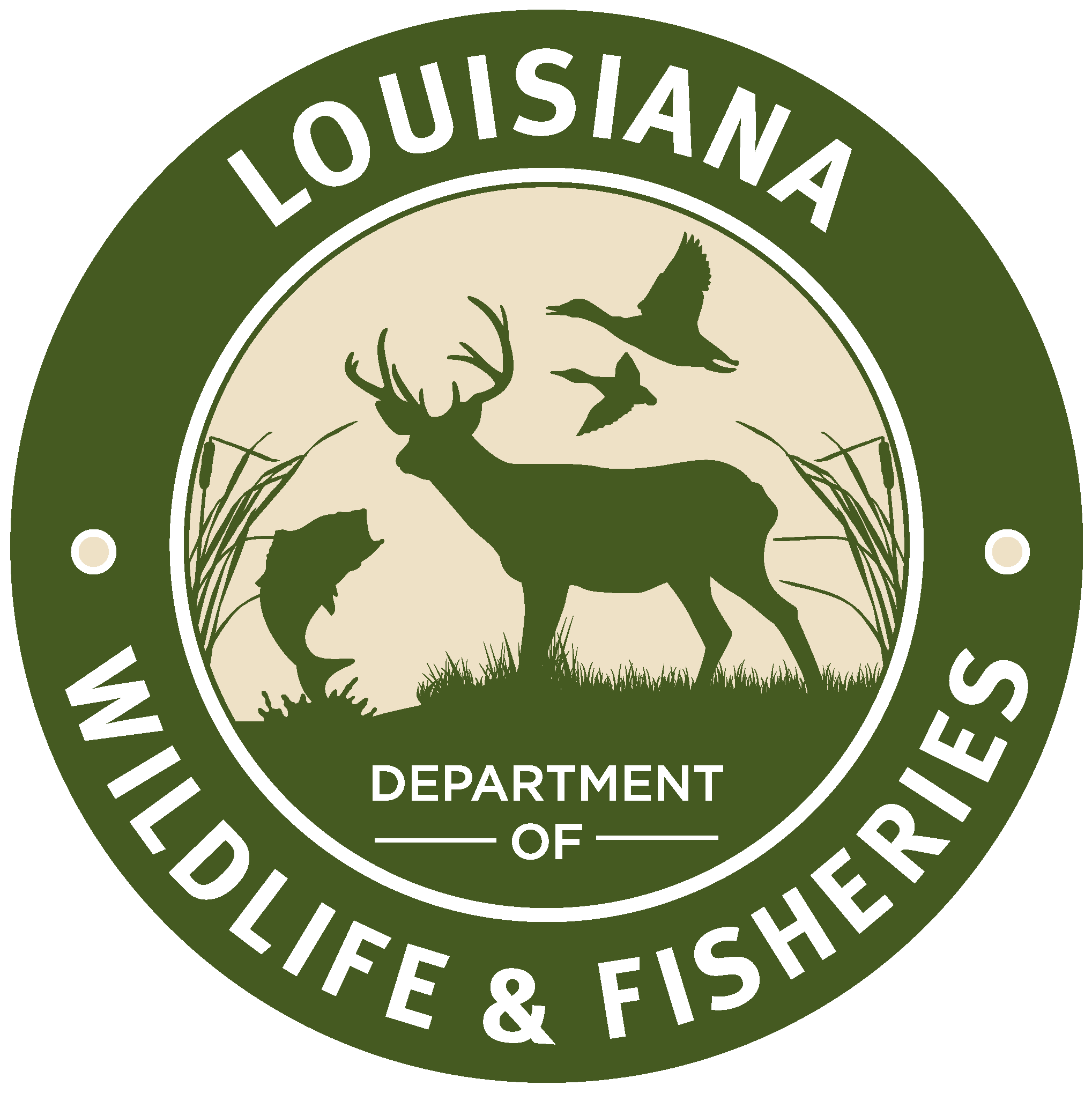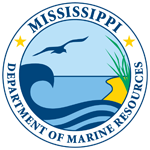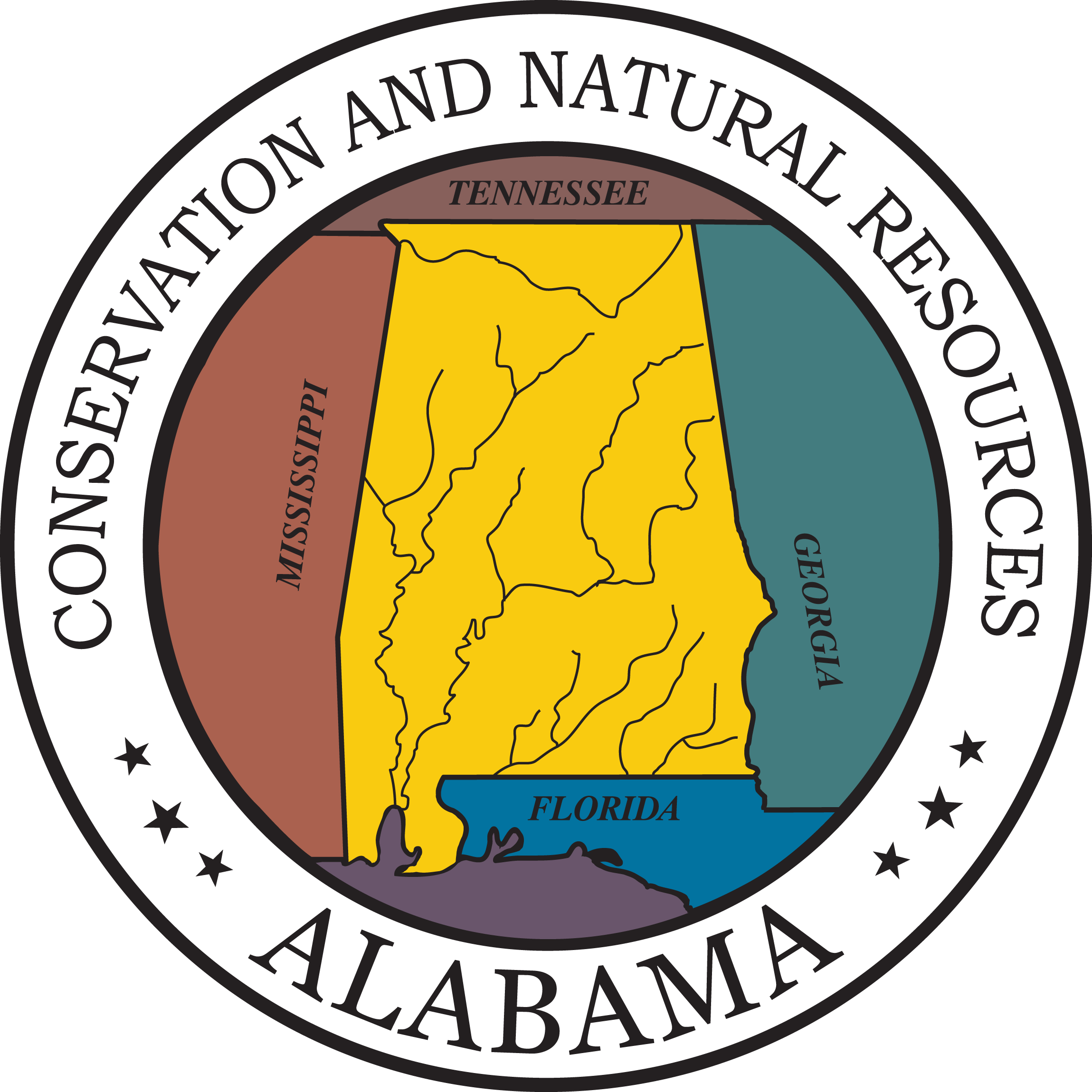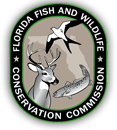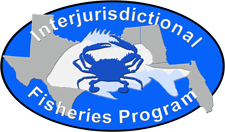
Interjurisdictional Fisheries Program
The Purpose
The Interjurisdictional Fisheries (IJF) Management Program evolved from the Commercial Fisheries Research and Development Act of 1965 (P.L. 88-309) and is one of the oldest cooperative state/federal management efforts. It is also the only such program in which the states determine management priorities through planning and research efforts for inshore and nearshore species, such as spotted seatrout, striped mullet, blue crabs, and oysters. In the Gulf of Mexico, these nearshore species comprise the majority of the commercial and recreational harvest, resulting in significant social and economic benefits to the Gulf States and the nation. The change in Acts was instituted because Congress wanted states to focus attention on cooperative management of commercially and recreationally important fish and shellfish that range across state and federal boundaries. In 2009, prior to the BP disaster, the majority of the Gulf's commercial fisheries landings came from state waters; federal waters averaged only 24% of the total landings and less than 20% of the total value. Regulatory actions in federal waters over the last decade have put increasing pressure on the nearshore fisheries for all species requiring greater management sophistication by the state marine agencies.
The Interjurisdictional Fisheries Act (IFA) of 1986, as amended (Title III, P.L. 99-659), was established by Congress to:
- promote and encourage state activities in support of the management of interjurisdictional fishery resources and
- promote and encourage management of interjurisdictional fishery resources throughout their range; and
- to promote and encourage research in preparation for the implementation of the use of ecosystems and interspecies approaches to the conservation and management of interjurisdictional fishery resources throughout their range.
History
IJF is the cornerstone of the fishery management programs for the states and has provided the support for long-term databases for shrimp and juvenile finfish in the Gulf of Mexico, which would otherwise not be available. In recent years, it has provided for regional planning efforts, by states, to manage nearshore resources in a manner consistent with the Magnuson Fishery Conservation and Management Act (MFCMA) of 1976 and its subsequent reauthorizations in 1996 and 2007. In essence, the IFA is to the states what the Magnuson Act is to the nation, and the benefits of sound management under these Acts do not accrue separately.
Funding under the Act supports states' monitoring and assessment programs and other research efforts to gauge the health of various commercially and recreationally important fish stocks. It also provides funding for the three marine interstate commissions to develop and revise biological and management profiles and plans for interjurisdictional fisheries that are used by the states to enact appropriate management strategies with conservation standards that will maintain fishable stocks throughout the Gulf of Mexico.
Profiles and Plans for Management
The development of management plans and profiles is the core of the Commission’s IJF program although there are numerous other programmatic activities which all support the development of FMPs. These activities include support of the Anadromous Fish Subcommittee, the development and continuation of derelict trap programs, standardization of age-and-growth methodologies, and the collection and housing of supporting literature used by the IJF and other Commission programs.
The structure of the profiles and plans is determined by a cooperative agreement between the National Marine Fisheries Service and the GSMFC. This agreement specifies the tasks that the Commission will perform in the organization and formulation of profiles and plans which include:
- to identify and prioritize fisheries for regional plan development,
- to organize task forces to develop the profiles and plans,
- to provide personnel to assist with plan development and operating procedures,
- to administer the program, and
- to provide recommendations of management actions.
The profiles and plans developed by the GSMFC serve as an educational device, supplying background information needed to better understand the resource. The documents include a synopsis of important life history information, as well as information on sociology, economics, and other aspects of the fishery. Table 1 provides the list of completed FMPs, management plans, revisions, and biological and management profiles completed to date. In addition, there are several species identified for future development (Table 2).
The GSMFC established a process whereby each profile or plan is to be developed by a technical task force (TTF) of experts appointed from each of the states' marine regulatory agencies. The process also provided for each of the GSMFC's various subcommittees (the Law Enforcement Committee, the Habitat Subcommittee, and the Commercial-Recreational Fisheries Advisory Panel) to be represented on the TTFs with membership being appointed by the respective committees. The GSMFC further provides for representation from federal agencies, academic institutions, and other organizations where such expertise is needed. Public comment is included on each profile or plan in the Commission’s review process, as illustrated in Figure 1. Once approved by the GSMFC, the documents are transmitted to the respective states for their consideration of adoption and implementation. An ongoing review process annually documents progress toward full management plan implementation and triggers the need for a plan review and potential amendment.
More Information
All of the management plans, revisions, and biological and management profiles are available as Adobe PDF files at Publications. If you need additional information concerning this program, please contact the GSMFC IJF/Aquaculture Coordinator, Steve VanderKooy, at (228) 875-5912 or via e-mail.
